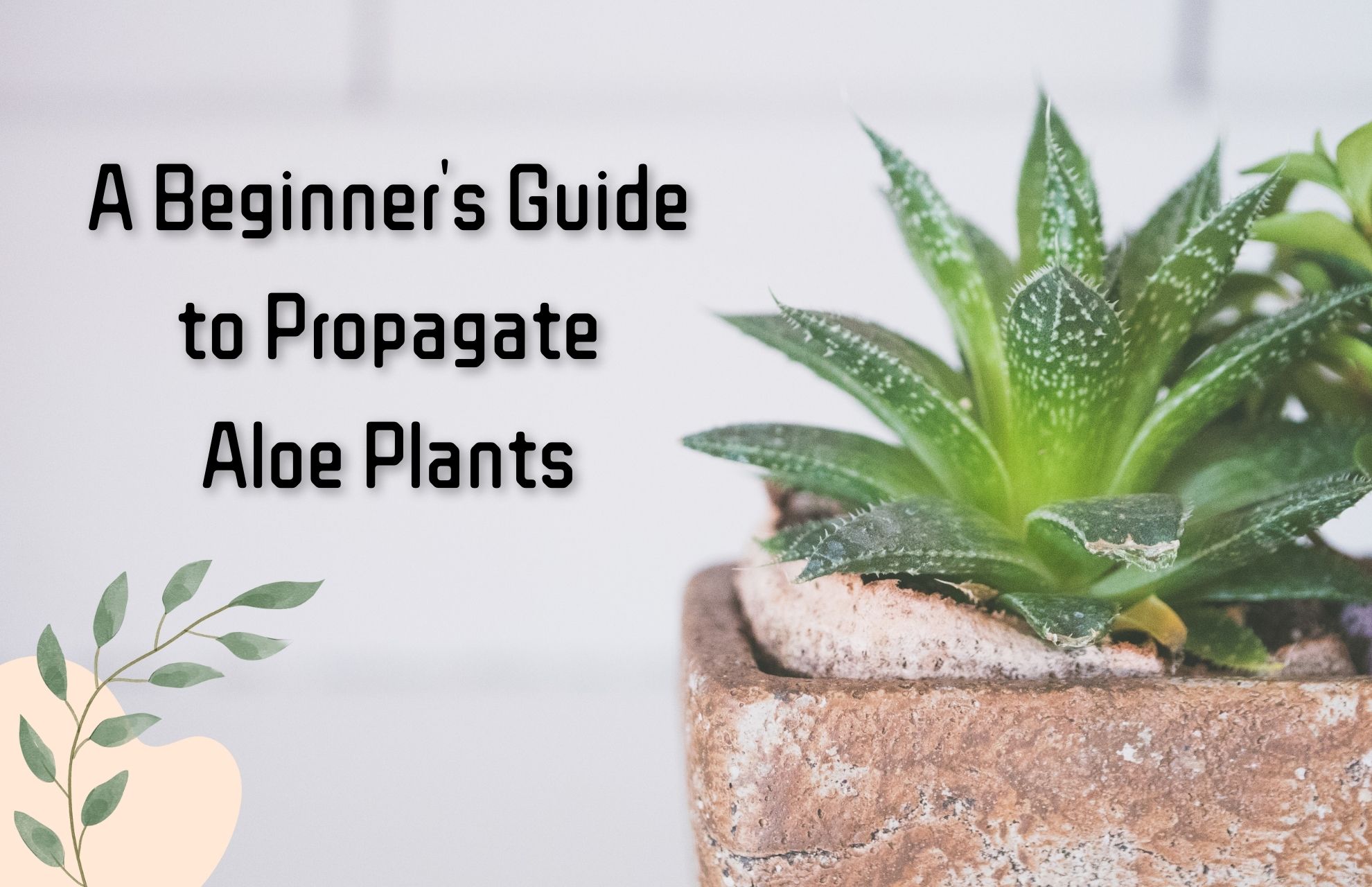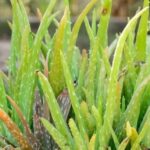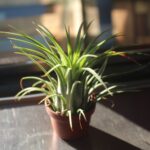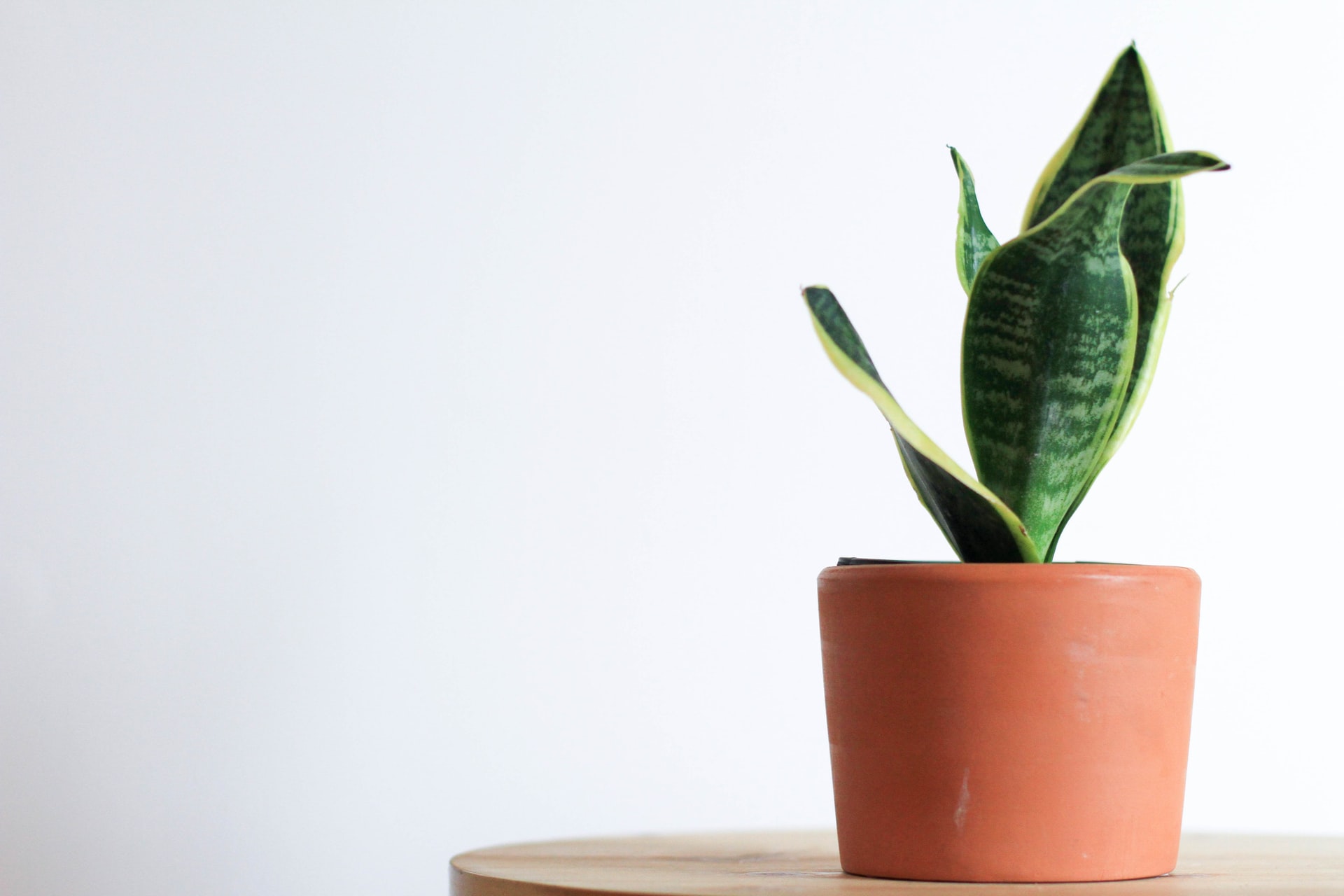Do you want to start an aloe plant and want to share it with friends? Let’s examine how to root an aloe vera plant from a leaf cutting and distinguish aloe pups.
Succulent plants like aloe produce offshoots at the base of the plant. You can increase the number of aloe plants in your home through the straightforward gardening technique of propagating aloe with these offshoots. Aloes, especially the well-known aloe vera, are very medicinal and also aid in air purification.
Apply this knowledge to your existing plant to grow new ones; distribute your new aloe vera pots throughout the house or give them as gifts.
About Aloe
Aloe, or Aloe vera, is a tender plant that forms a rosette of long, slender, fleshy leaves that are lined with soft, spiny teeth along the edges.
These leaves can be cut open to reveal the gel-like substance that many health professionals use in everything from recipes to beauty treatments. Because of the alleged anti-inflammatory properties of the aloin substance found in the interior pulp, it is a preferred holistic treatment.
If you intend to use the plant in any recipes, make sure to do your research on how to consume it properly because some parts of the succulent are poisonous.
Necessary Equipment & Materials to Propagate Aloe Plants
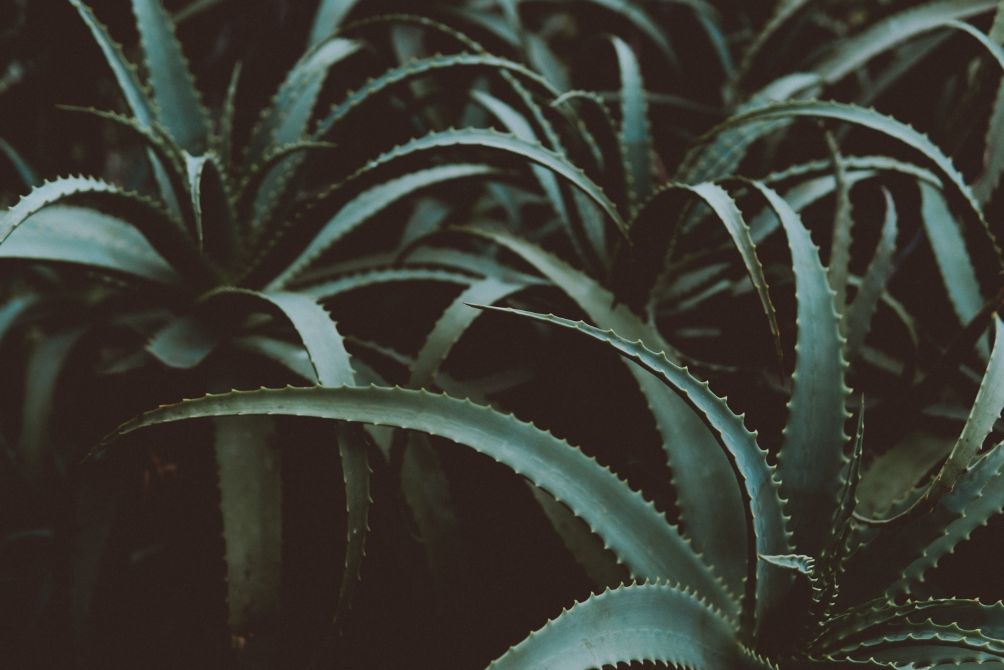
Before you jump into propagating, have the following supplies on hand:
- One healthy aloe plant with pups
- A sharp, clean knife or clippers to cut with
- A pot or container with drainage holes
- Well-draining garden soil, preferably a succulent blend
- A trowel (optional)
- Rooting hormone (optional)
Further Reading: What Is The Best Pot For Aloe Plant? How To Choose?
How to Propagate Aloe Plants?
Both novice gardeners and seasoned professionals can easily propagate aloe.
The Division Method
Step 1: The pups should be on or near the stem of your aloe plant. They might also be hiding at the mother plant’s base if they aren’t at the stem. Their mother’s massive leaves may completely conceal them. At least a few leaves and a separate root system should be present on each offset.
Step 2: Remove the entire plant from the pot, pups, and all, and remove as much soil as you can. Use a trowel to carefully loosen the soil and remove the aloe plant and its pups if it was planted in a garden bed. Don’t disturb any nearby plants by moving them. Watch out for both the offsets and the parent aloe plant’s root systems.
Step 3: The pups should be gently untangled from the mother plant. If necessary, free them with a knife; do not, however, cut the roots. Take your time with this step to ensure that you do the least amount of harm.
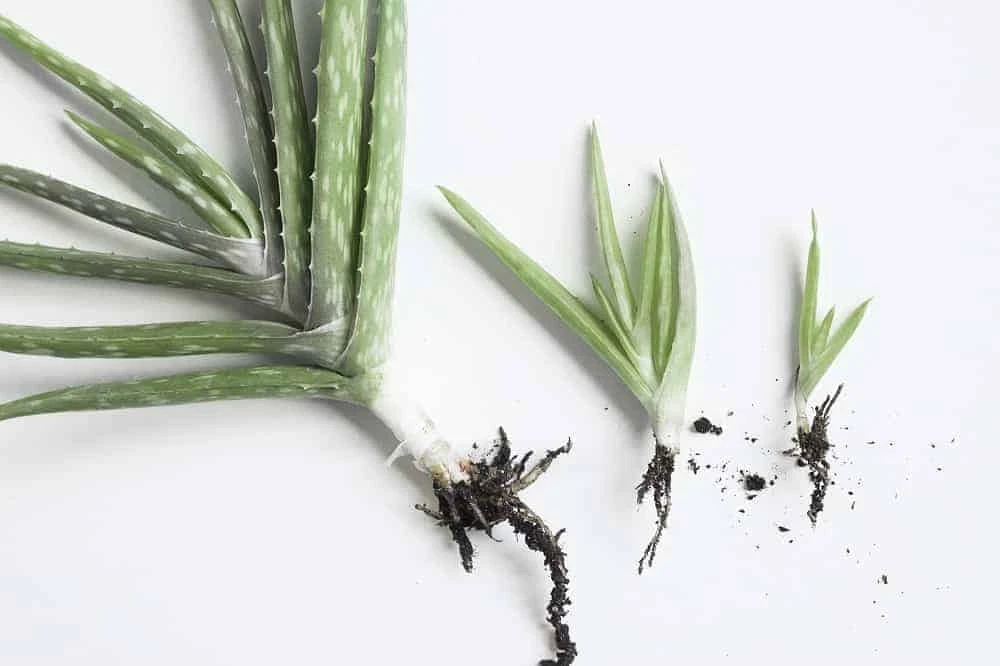
Step 4: Examine the offset’s roots for any damage now that it has been separated. Save as much of the root as you can by cutting off any rotten or unhealthy portions. You might also want to look for damage in the mother plant’s roots.
Step 5: Dip the ends of offsets that have few or damaged roots in the rooting hormone to promote new growth. The rooting hormone does aid in root development, though it is not always necessary.
Step 6: Report the offset in dry soil that drains well. Don’t compact the soil too firmly; the roots need to breathe. The pups still need to acclimate to the new soil around their root system despite their small size.
Step 7: Place the mother plant’s container back on the shelf. You could also make use of this opportunity to replace the pot with a bigger one. It’s the same procedure whether you’re repotting aloe vera or another plant. The depth at which the plants were growing in their previous container should be maintained. The same would apply if your plants were in a garden bed.
Step 8: It’s tempting to give your baby aloe plant some water as a housewarming present. Keep it dry though for a few days. The best time to move a plant is when the soil is dry because the roots need time to recover from the move. After a few days to a week, gradually start watering your plants once more.
The Leaf Cuttings Method
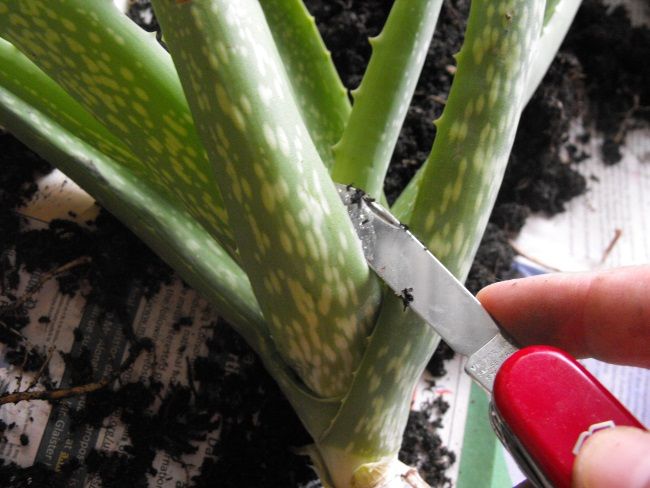
Compared to division, this strategy has a much lower success rate. We strongly advise using pups for reproduction if you can. If, however, your aloe doesn’t have offsets or you have a healthy leaf that broke off, you might want to try leaf cuttings.
Step 1: Cut a piece of a leaf from your chosen mother plant using a clean, sharp knife. The leaf doesn’t need to be cut off at the joint as it does with most succulents. You can take out the majority of the leaf or just the top few inches. To avoid a jagged cut, make sure the cut is neat and clean.
Step 2: Allow the cutting to dry for a few days. As it dries out, the wound will scab over where you cut it. It’s likely to rot instead of drying out. Sadly, this indicates that the cutting won’t grow, so you’ll have to start over with a new cutting.
Step 3: Insert the cutting upright in a container that has been filled with potting soil that drains well. If it’s a large cutting, you can also simply lay it on top of the ground. For leaf cuttings, the rooting hormone is not required, so it is not needed in this situation. They will grow roots of their own.
Step 4: To keep the soil consistently damp but not soaked, mist cuttings with water. Revert to a watering schedule that best suits your plants’ needs once they have developed roots and new leaves and are reliably growing. Keep in mind that for healthy plant development, the soil should be able to easily drain off excess water.
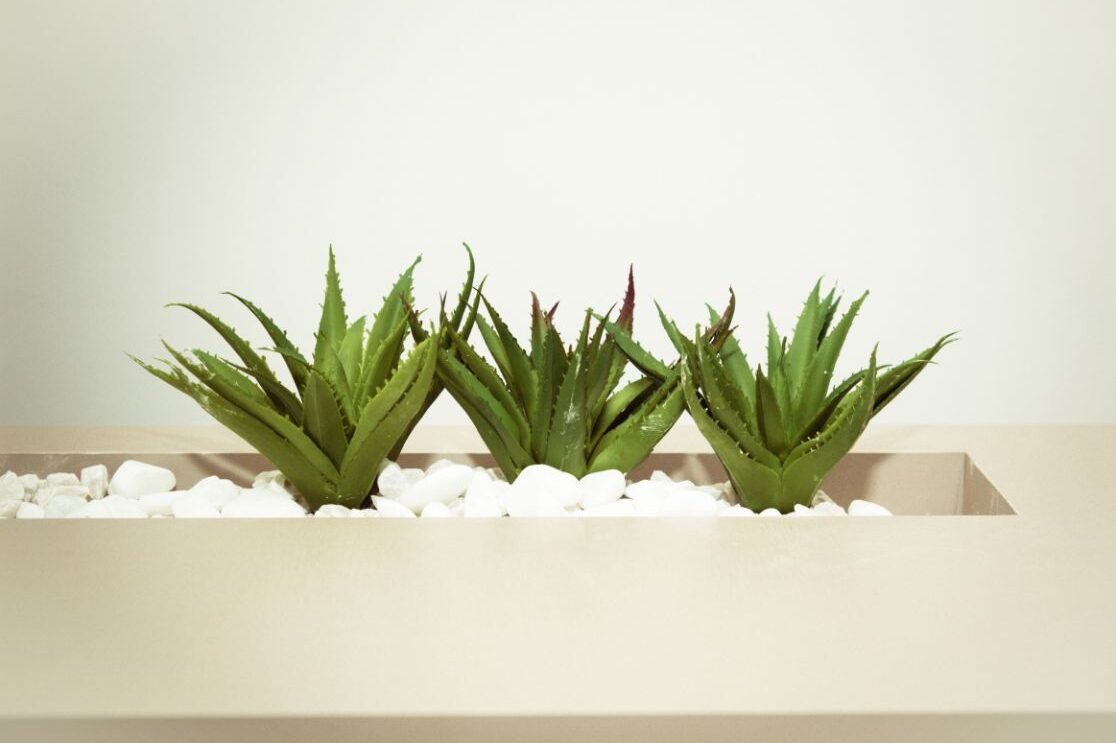
FAQs
Can You Replant a Broken Aloe Leaf?
Imagine that you accidentally break off a piece of your aloe leaf. Contrary to popular belief, you can actually replant the broken aloe leaf by treating it like a leaf cutting. You can simply harvest the gel and call it a day. The broken end of your leaf should be inserted into a brand-new cactus potting mix, as we mentioned above, and allowed to develop a callus.
Can You Root Aloe Vera Cuttings in Water?
Aloe vera cuttings thrive in soil, particularly if their roots have not yet formed. The roots of an aloe vera cutting can extend in length in water if they already do. Technically, you could grow aloe vera hydroponically by immersing its roots in water, but you’ll want to keep the leaves dry. When growing aloe vera in water, you also need to take into account elements like light, oxygen, and fertilizer.
Can You Grow Aloe Vera from Seed?
Aloe vera seeds can be grown, but it takes a lot of persistence. You’ll face a difficult journey if you want to grow aloe vera from seed. For germination to be facilitated, your plant needs to be exposed to bright light for at least eight hours a day; you’ll probably want to buy grow lights or leave your plant outside.
Conclusion: Propagate Your Aloe Plants Now
That is all there is to growing aloe plants. Now you can share them with others or grow your aloe collection without spending a dime. No matter your level of gardening experience, we advise you to give it a shot because aloes look beautiful in the garden!
When you have rooted pups that are prepared for cutting or plucking, aloe vera plant propagation is incredibly easy. Also, in case you’re interested in these methods, you can grow new aloe from seeds and cuttings as well.
Whatever method you choose, you can easily grow aloe vera and, when the time comes to harvest the leaves, enjoy the useful gel.
Further Reading: Why my Aloe Plant is Turning Brown?

